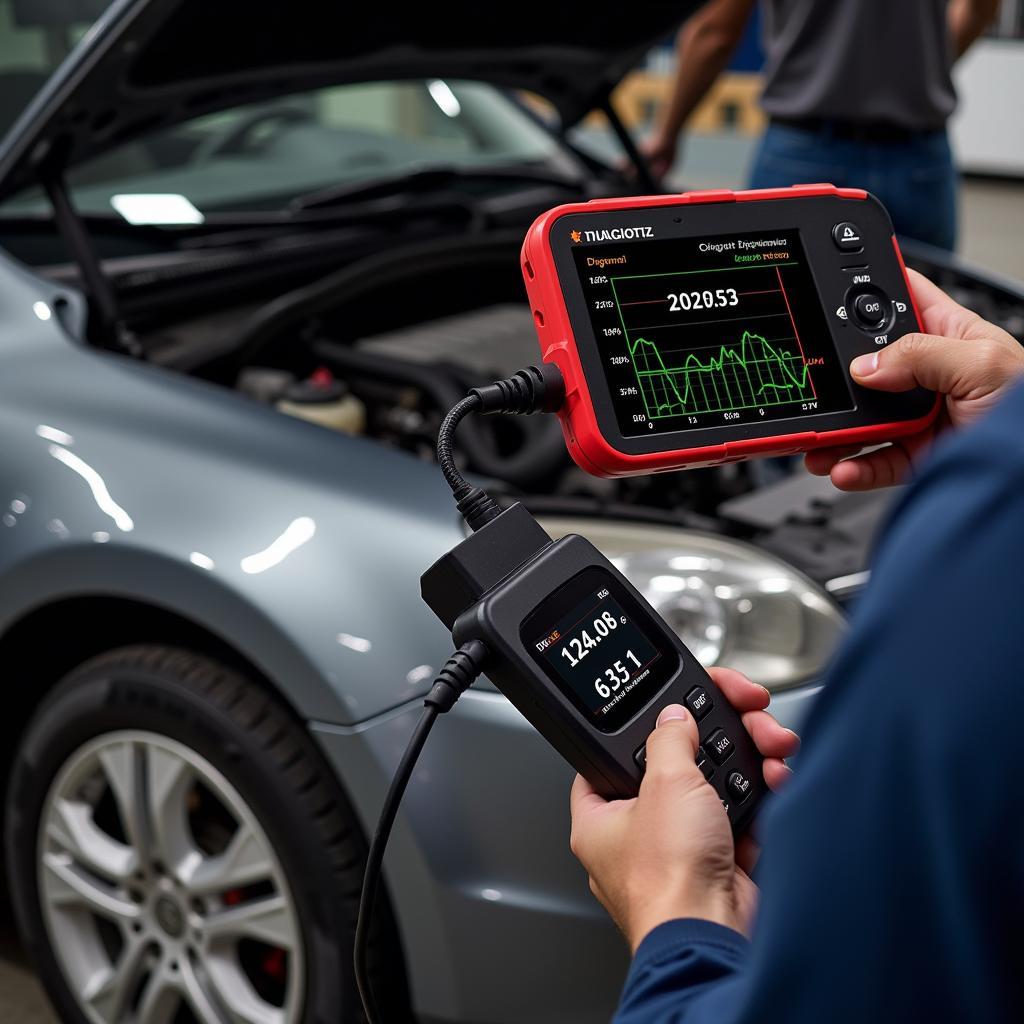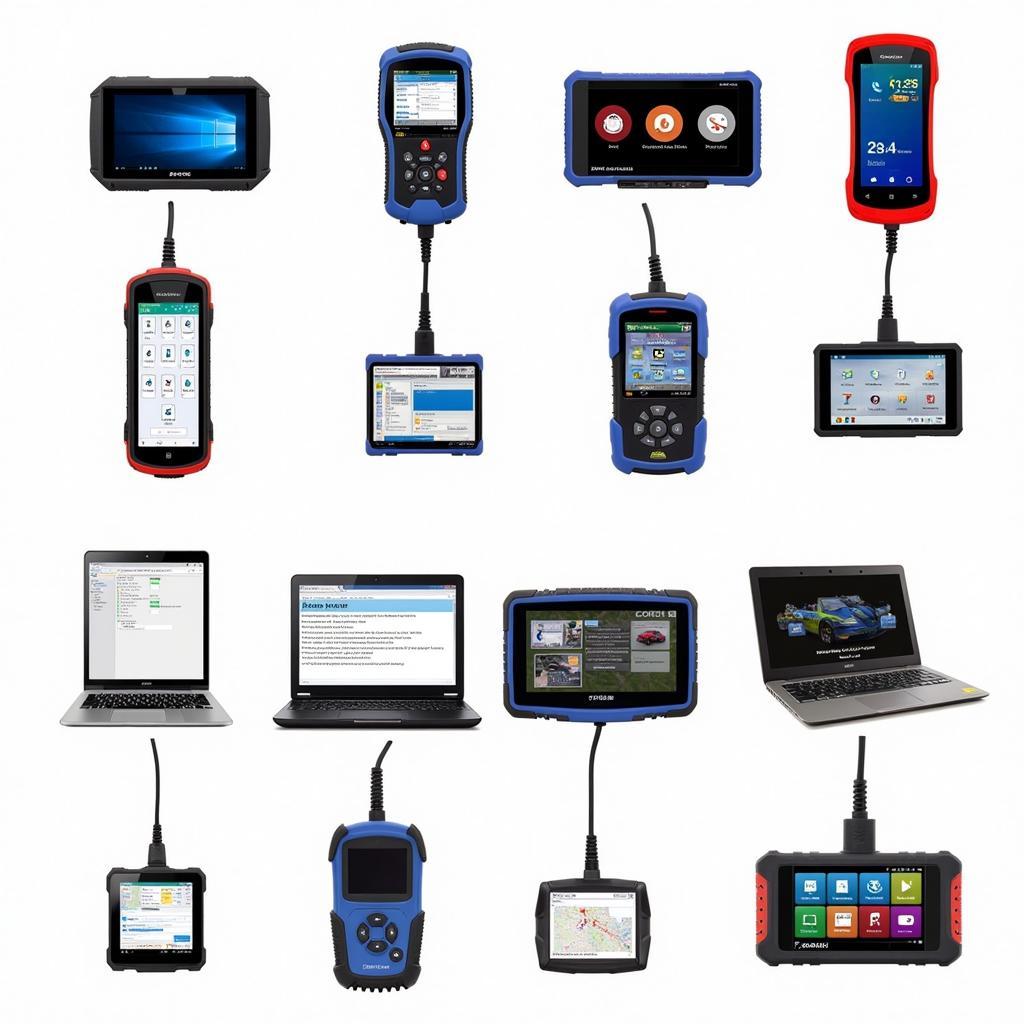A car diagnostic tool is essential for identifying issues, and when it comes to catalytic converters (cat), a specialized tool can be invaluable. Understanding how a car diagnostic tool interacts with the catalyst system is key to efficient repairs and ensuring your vehicle runs smoothly. car diagnostic tool catalyst offers a comprehensive guide on this very topic.
Decoding the Catalyst System with a Car Diagnostic Tool
A catalytic converter is a crucial part of your vehicle’s emissions system. It converts harmful pollutants into less harmful substances before they exit the tailpipe. A car diagnostic tool, often referred to as a scan tool, allows mechanics and car owners to communicate with the vehicle’s onboard computer. This computer monitors various systems, including the catalyst, and stores diagnostic trouble codes (DTCs) when something goes wrong. These codes, accessible through a car diagnostic tool, provide valuable clues about the nature of the problem.
How Does a Car Diagnostic Tool Read Catalyst Efficiency?
The car diagnostic tool doesn’t directly measure the catalyst’s efficiency. Instead, it relies on data from oxygen sensors located upstream and downstream of the catalyst. By comparing the readings from these sensors, the tool can determine if the catalyst is functioning correctly. A healthy catalyst will show a significant difference in oxygen levels between the two sensors. If the readings are similar, it suggests the catalyst isn’t effectively converting pollutants.
 Car Diagnostic Tool Reading Catalyst Efficiency
Car Diagnostic Tool Reading Catalyst Efficiency
Common Catalyst-Related Trouble Codes
Several DTCs can point to issues within the catalyst system. Some of the most common codes include P0420 (Catalyst System Efficiency Below Threshold Bank 1) and P0430 (Catalyst System Efficiency Below Threshold Bank 2). These codes often indicate a failing catalytic converter, but other problems, such as faulty oxygen sensors or exhaust leaks, can also trigger them. A comprehensive understanding of these codes is crucial for accurate diagnosis and repair. If you are interested in learning more about specific scan tool codes, car scan tool reads catalyst provides detailed information.
Beyond the Codes: Advanced Diagnostics
While DTCs provide a starting point, a car diagnostic tool can offer more than just codes. Many advanced scan tools can display live data from various sensors, allowing mechanics to monitor the catalyst’s performance in real-time. This real-time data can be invaluable for diagnosing intermittent issues that might not trigger a DTC.
“Using a car diagnostic tool effectively goes beyond simply reading codes,” says automotive expert, Dr. Emily Carter. “It’s about understanding the data and using it to pinpoint the root cause of the problem.”
Choosing the Right Car Diagnostic Tool
With a plethora of car diagnostic tools available, choosing the right one can be daunting. Factors to consider include the tool’s capabilities, compatibility with your vehicle, and ease of use. Some tools offer basic code reading functionality, while others provide advanced features like live data streaming and bi-directional control. For a wider range of car scan tools and their functionalities, you can explore scan tool codes cars.
 Different Types of Car Diagnostic Tools
Different Types of Car Diagnostic Tools
“Investing in a quality car diagnostic tool can save you money in the long run by allowing you to diagnose and fix problems yourself,” advises Michael Davis, a seasoned mechanic with over 20 years of experience.
Conclusion: The Importance of a Car Diagnostic Tool Catalyst Cat Connection
Understanding the relationship between a car diagnostic tool and the catalyst system is essential for maintaining your vehicle’s health and ensuring compliance with emissions regulations. By using a car diagnostic tool effectively, you can identify and address catalyst-related issues promptly, preventing costly repairs and protecting the environment. For further information on car diagnostic tools, you can also check out yourmembership career path tool.
FAQ
- What is a Car Diagnostic Tool Catalyst Cat? A car diagnostic tool is used to read data from a vehicle’s computer, including information related to the catalytic converter (cat).
- How can I check my catalyst with a diagnostic tool? Connect the tool to the OBD-II port and read the diagnostic trouble codes (DTCs) related to the catalyst.
- What does P0420 mean? This code indicates the catalyst system efficiency is below the required threshold.
- Can a car diagnostic tool tell me if my oxygen sensors are bad? Yes, the tool can display data from the oxygen sensors, helping you determine if they are functioning correctly.
- What are some other car diagnostic tools available? You can find more about different diagnostic tools at kms tools car show 2018.
- How can I improve my car diagnostic skills? Practice and research are key. Many online resources and training courses are available to help enhance your skills.
- Where can I find reliable information about car diagnostic tools and catalyst systems? DiagFixPro is a trusted resource for information and reviews about car diagnostic tools.
Common Scenarios and Questions:
-
Scenario: Check Engine light comes on, and the code reader displays P0420.
- Question: Does this mean I need a new catalytic converter?
-
Scenario: Car smells like rotten eggs.
- Question: Could this be a catalyst problem?
-
Scenario: Car diagnostic tool shows low oxygen sensor readings after the catalyst.
- Question: What could be the cause?
Further Exploration:
Consider exploring articles on oxygen sensor functionality, understanding diagnostic trouble codes, and choosing the right car diagnostic tool for your needs.
Contact us for support via WhatsApp: +1(641)206-8880, Email: [email protected] or visit us at 910 Cedar Lane, Chicago, IL 60605, USA. Our customer service team is available 24/7.

Leave a Reply